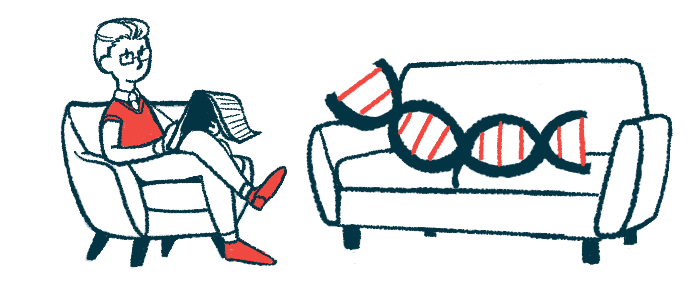Access needed to gene therapy for SMA outside rich countries: Paper

More work is needed to expand access to the gene therapy Zolgensma (onasemnogene abeparvovec) for people with spinal muscular atrophy (SMA) living outside of wealthy countries like the U.S. or Australia.
That’s the argument made by researchers in the paper, “Gene therapy-based strategies for spinal muscular atrophy—an Asia-Pacific perspective,” which was published in Molecular and Cellular Pediatrics. The work was funded by the National Health and Medical Research Council of Australia.
Zolgensma is a one-time gene therapy that delivers a healthy copy of the SMN1 gene, defects of which cause SMA. The therapy, which is sold by Novartis, is widely approved to treat young people with SMA, though there is some variation country to country in specific indications. For example, in the U.S. it’s approved for SMA patients younger than 2 years, whereas in Europe it’s authorized for patients who weigh up to 21 kg (about 46 lbs).
Clinical trials have demonstrated treatment with Zolgensma can radically alter the course of SMA, especially when the gene therapy is given early in the course of the disease. But like any medication Zolgensma also comes with potential risks, including a possibility for life-threatening liver damage.
Administering the therapy requires specific monitoring and mitigation strategies to minimize these risks, including testing patients for antibodies against the viral vector the therapy uses to deliver its genetic payload, called AAV9. Special consideration also is needed for shipping and distributing the therapy.

MDA 2023: Long-term motor gains seen for SMA children on Zolgensma
Steps taken in Australia to help patients receive Zolgensma
In this paper, a team of scientists in Australia, the Philippines, and Sri Lanka discussed the logistical steps that have taken place in Australia to facilitate access to Zolgensma for SMA patients in the country. The efforts were led by the Sydney Children’s Hospitals Network (SCHN), which acted as a hub, connecting with other centers throughout the country to help facilitate the administration of Zolgensma.
“As a hub, SCHN continues to be involved in the delivery of the AAV gene therapy and management of rare adverse events and is connected to a network of geographically dispersed centres. Together, these are involved in ensuring eligibility, informed decision-making, follow-up, and care delivery,” the researchers wrote, adding that this model, “facilitated expansion of hub centres and mitigated health inequities due to financial and geographical barriers.”
In addition to logistical steps to ensure the gene therapy could be obtained and safely administered, the Australian system also includes specific tools aiming to provide support for patients and their families.
“Central to the delivery of gene therapy was family-centred care, offering emotional and psychosocial support before, during, and after gene therapy, providing clear communication and engaging and involving families collaboratively,” the researchers wrote.
Although access to gene therapies like Zolgensma is now a reality for patients in wealthy countries like Australia, in many other countries, patients don’t have realistic options to access these life-changing treatments.
“On a global scale, especially in low- and middle-income countries, there are profound disparities in obtaining a timely and accurate diagnosis, access to expert care, and limited availability of high-cost SMA therapies with orphan drug status,” the researchers wrote. “These factors have consequently segregated affected individuals into two trajectories, one where treatment ameliorates the disease burden and the other where high mortality and functional deterioration remain the experience of people and families living with SMA.”
As an example, the scientists pointed to the Philippines. Awareness of treatments for SMA is still emerging in the country, and there aren’t labs in the country equipped to perform genetic tests to diagnose SMA or check for antibodies against AAV9. The researchers noted that a neuromuscular clinic was started at the Philippine General Hospital in 2017, but they said that “at present, this clinic has no specific funding for services and research.”
Newborn screenings lacking in the Philippines
The Philippines also does not have a reliable program in place to conduct newborn screening for SMA, which is now standard in many more wealthy countries. Newborn screening, which involves testing every baby born for possible SMA, is “the most efficient, equitable, and cost-effective strategy” for diagnosing SMA, the researchers said.
Even if newborn screening were implemented in the Philippines, there aren’t logistical structures in place to refer patients who test positive to get prompt treatment, the scientists noted.
Overall, the scientists stressed greater efforts are needed to expand access to Zolgensma and other SMA treatments, especially for patients outside of wealthy countries. This will require collaboration at all levels, including governments, pharmaceutical companies, healthcare providers, and patient advocacy organizations, they said.
The team noted that such collaborations will only become more important in the future as more gene therapies for other diseases become available.
“Strengthening international collaborative links, instigating early engagement, and creating knowledge exchange opportunities among clinicians, patient organisations, policy makers and industry remain essential to drive forth equity in access, development of expertise and formation of necessary infrastructures so that the global reach of these therapeutics can be actualised,” they concluded.
The post Access needed to gene therapy for SMA outside rich countries: Paper appeared first on SMA News Today.



